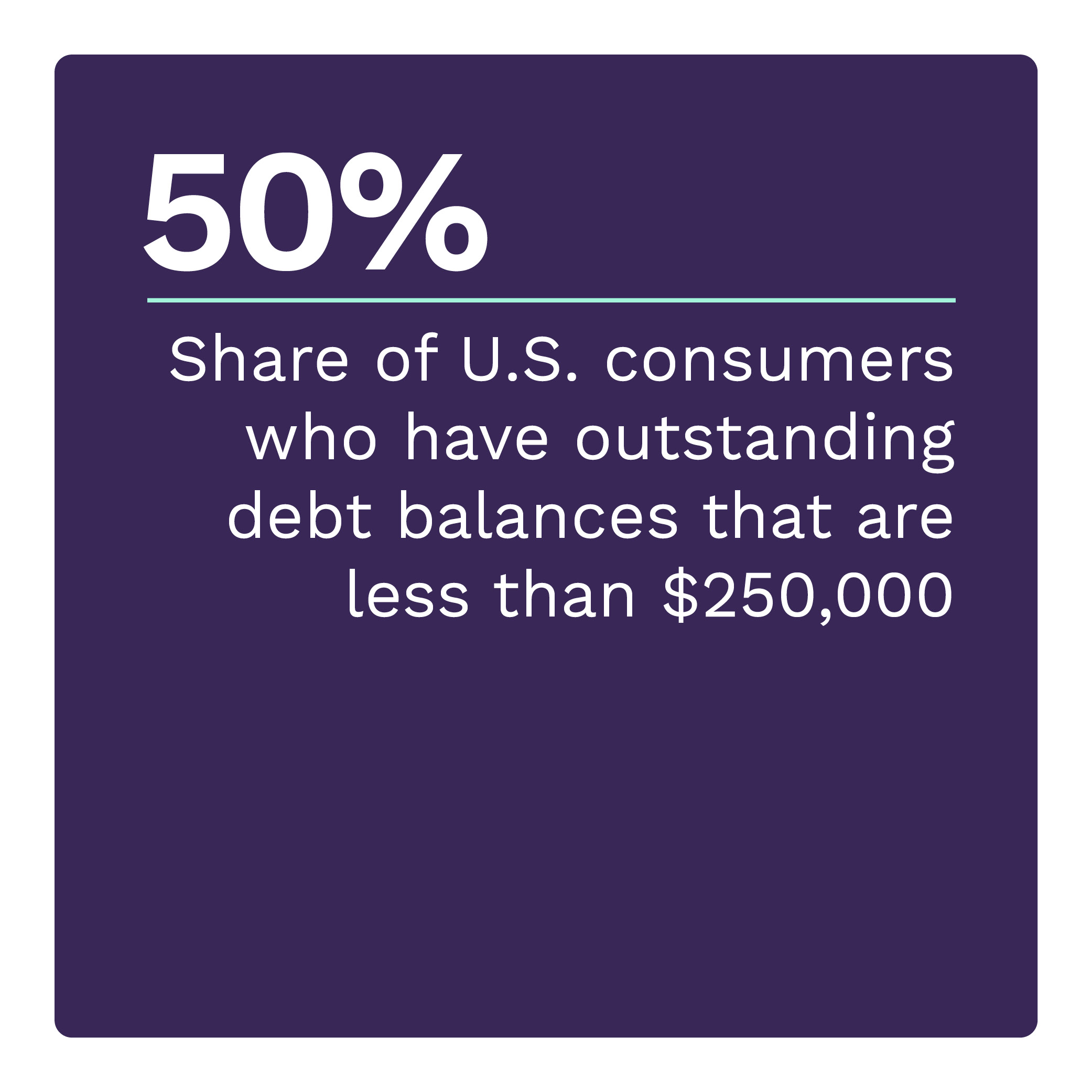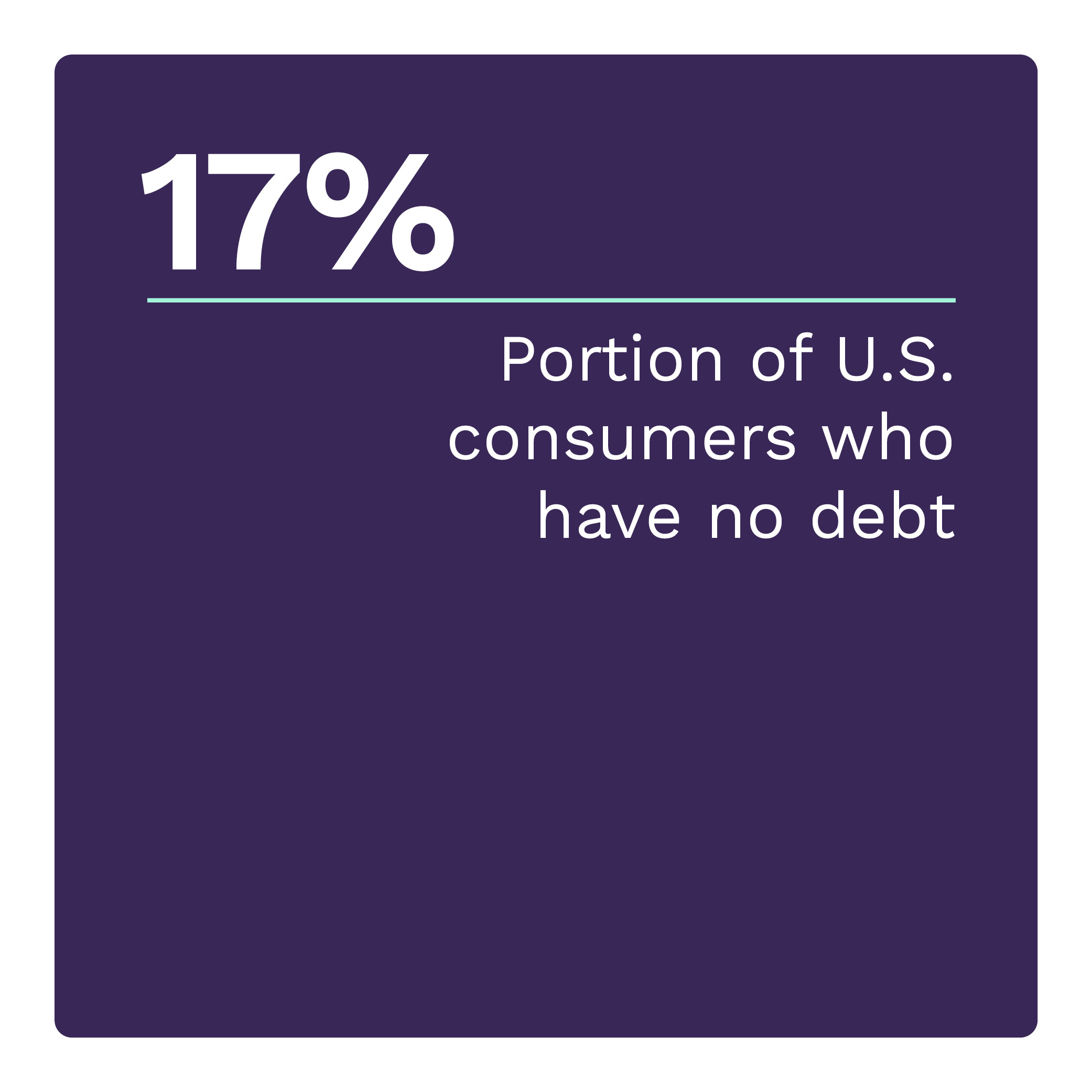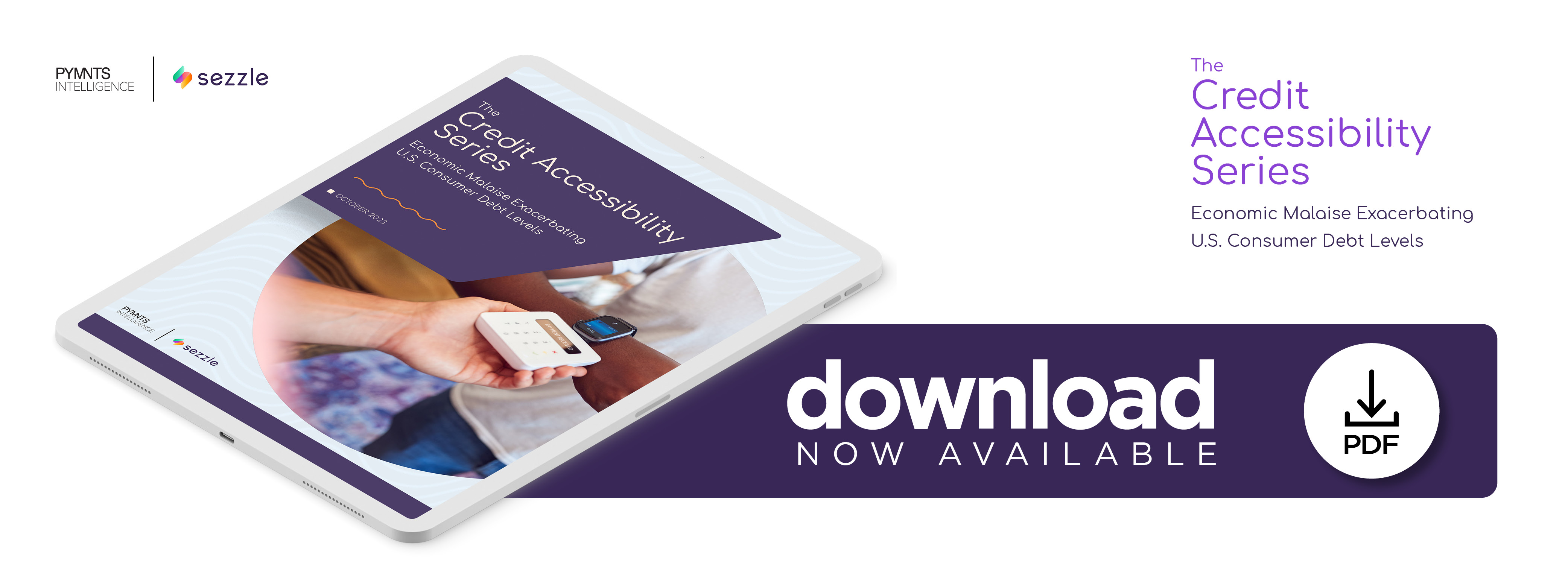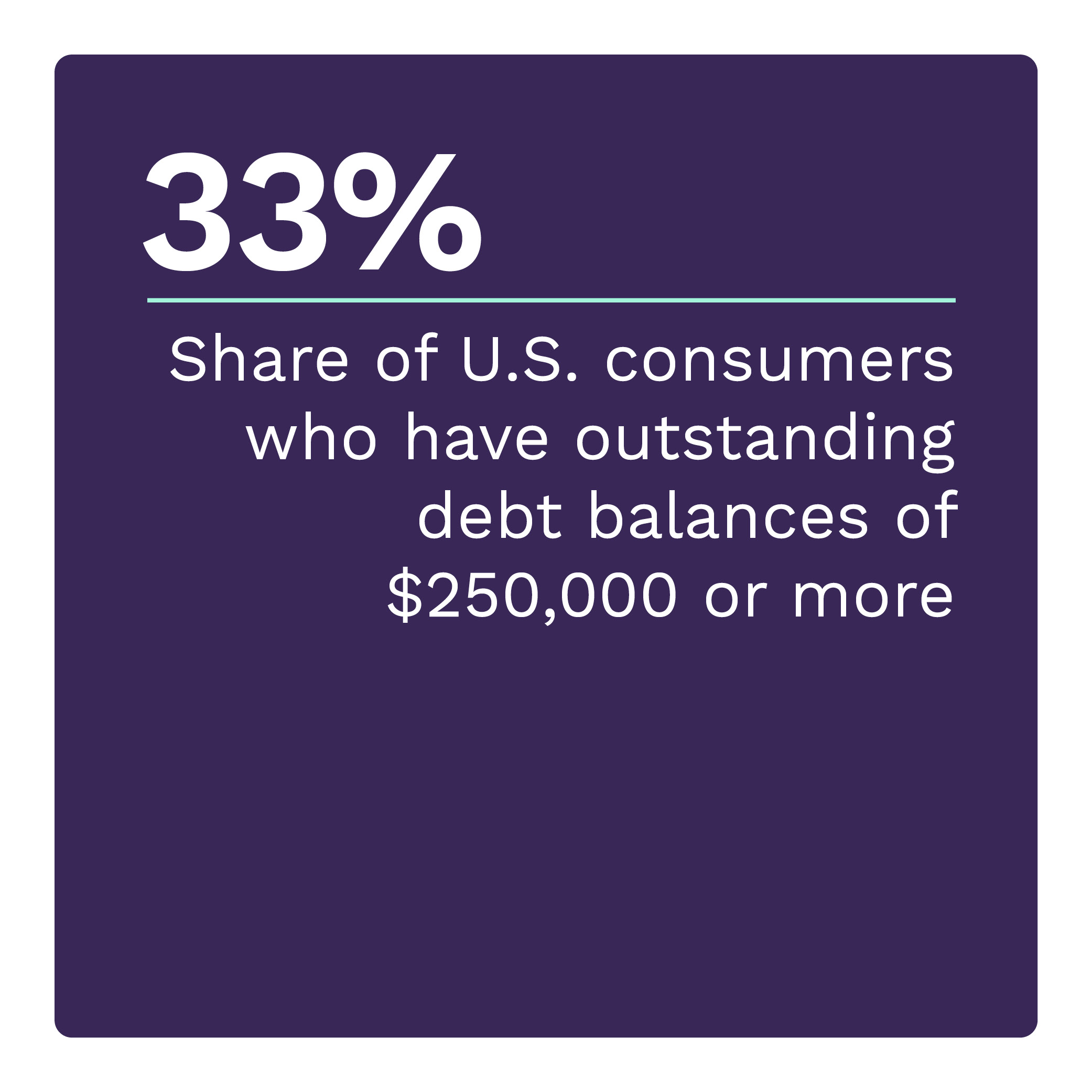Debt is not inherently bad. However, if mismanaged or misused, debt can punish those who overly rely on it. Roughly 1 in 3 consumers struggle to make payments on time, and most have multiple late payments. These pressures may explain why many consumers use credit builder apps to learn financial management strategies.
These are just some of the findings detailed in “The Credit Accessibility Series: Economic Malaise Exacerbating U.S. Consumer Debt Levels,” a PYMNTS Intelligence and Sezzle collaboration. The report explores the characteristics, sentiments and behaviors of consumers’ debt personas. We surveyed 2,635 U.S. consumers between July 12 and July 20 to determine how high levels of debt impact different consumers’ credit accessibility, livelihoods and purchasing power.
Other findings from the report include:
One-third of U.S. consumers owe more than $250,000 in outstanding debts, mostly made up of mortgage and auto loans.
There are patterns in how consumers hold debt. High-debt consumers represent one-third of the U.S. consumer population and owe at least $250,000 in outstanding debt. Half of consumers fit in a second group — low-debt consumers — and owe less than $250,000. The remaining 17% of U.S. consumers carry no outstanding debt. High-debt consumers are more than twice as likely as low-debt consumers to have an auto loan.
Three out of 10 high-debt consumers have overdue payments and are more likely to use overdrafts to cover transactions than any other consumer.
At 30%, high-debt consumers are marginally less likely than other consumers to make late payments than the average consumer, at 33%. However, this does not tell the complete story, as among consumers who are late making payments, those carrying high levels of outstanding debt have twice as many missed payments, on average, as those with low debt. This may explain why high-debt consumers are more likely to use overdrafts to cover transactions.
Credit-building apps are becoming popular among consumers in tough spots due to high debts and low credit scores.
We found that 36% of consumers with credit score issues have used a credit-building app in the last year, and an additional 22% did not use one but were interested in doing so. High-debt consumers were significantly more likely than other groups to use these apps: 46% of high-debt consumers with credit score problems have used credit-building apps, versus 27% of consumers with no debt who have credit score problems.
Current economic and financial conditions, with rising consumer prices across products and services and stagnant wages, also exacerbate consumer debt levels. Download the report to learn more about how consumer debt impacts their credit access, livelihoods and purchasing power.







